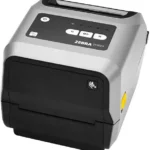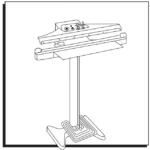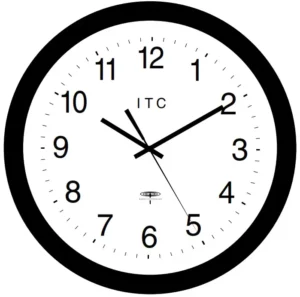
H -2 811
RADIO-CONTROLLED
WALL CLOCK
1-800 -295-5510
uline.com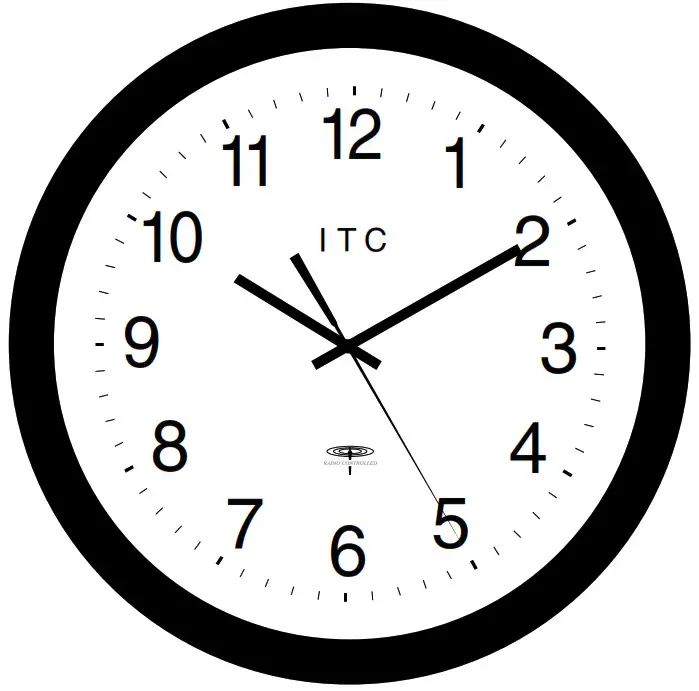
INSTRUCTIONS
SET UP
- Set the Time Zone switch to your time zone (P – Pacific TIme, M – Mountain Time, C – Central Time, E – Eastern Time). (See Figure 1)
- Insert one fresh 1.5V AA battery, noting the correct polarity (+/-). (See Figure 1)
- Automatic Setting: After the battery is inserted, hands will quickly advance until they reach 12:00. The clock will move at a normal rate until it receives the signal. The signal may be received as soon as a few minutes or up to a few days.
- In most cases, the signal will be found overnight.
DAYLIGHT SAVINGS TIME (DST)
If you live in an area that does not recognize DST (Arizona or Indiana), push the DST switch to off. To reactivate, press the DST switch to on. (See Figure 1)
Figure 1

MANUAL TIME SETTING
On rare occasions, the clock may not connect to the radio signal within 24 hours because of the strength of the signal or geographic location.
The clock can be set manually and used as a regular quartz wall clock until it finds the radio signal. When all hands stop at 12:00 you may advance the clock manually. Press and hold either Manual Set (M.SET) button until it reaches the correct time. When the clock successfully receives the signal, it will move to and keep the proper time. (See Figure 1)
CLOCK LOCATION GUIDELINES
WWVB is the National Institute of Standards and Technology (NIST) radio station in Fort Collins, CO. The WWVB time signal will easily penetrate masonry and wood frame buildings. The signal is obtainable in most steel buildings, providing there are adequate windows. It is not possible, however, for the signal to penetrate rooms in the center of large buildings that do not have windows. In buildings that the signal cannot penetrate, you may set the time using the manual time set button. When the clock is exposed to the signal, it will automatically set the hands to the exact time.
The clock should not be placed within 5 feet of any items that can interfere with reception: electronic appliances including televisions, radios, microwaves, computers, another radio-controlled clock, phones, or stereos. Large metal surfaces such as aluminum or steel siding, metal counters, or cabinets might also affect the reception.
The best reception will be on a wall near a window that is nearest to the direction of Fort Collins, Colorado. Due to the nature of long-wave radio signals, it may not be possible to receive a signal during the day, so it is best to install the battery late in the evening.
PROBLEMS OR DIFFICULTIES
In some instances, when the time signal is unavailable, the clock movement will continue to search for a readable signal. If it cannot find a signal, the movement may stop.
To reset, you must clear the memory by removing the battery and inserting the battery backward for 5 seconds. Then remove the battery and install it correctly. Ideally, restart the clock after 10:00 PM, as the time signal quality is generally better during night hours.
LOW BATTERY FUNCTION
The minute hand begins to advance in 2-second increments when the battery is low. When this condition is noticed, replace the old battery with a fresh one. After installation, let the clock reset itself by receiving the time signal. NEVER attempt to move the hands manually.
CHECKING TIMEKEEPING ACCURACY
For the exact time, call the NIST time and frequency service in Fort Collins at 303-499-7111 or visit their web site at http://www.boulder.nist.gov/timefreq. If your clock has received a signal and has set itself properly, it will agree with the time broadcast. Daylight Savings Time (DST): If you choose summer time (DST ON), the clock runs the summertime when it has received the DST signal. Otherwise, it keeps running time normally.
EXTREME TEMPERATURES
The clock will operate in the temperatures range of 14° to 122°F. Temperatures outside this range may affect the performance of the clock.
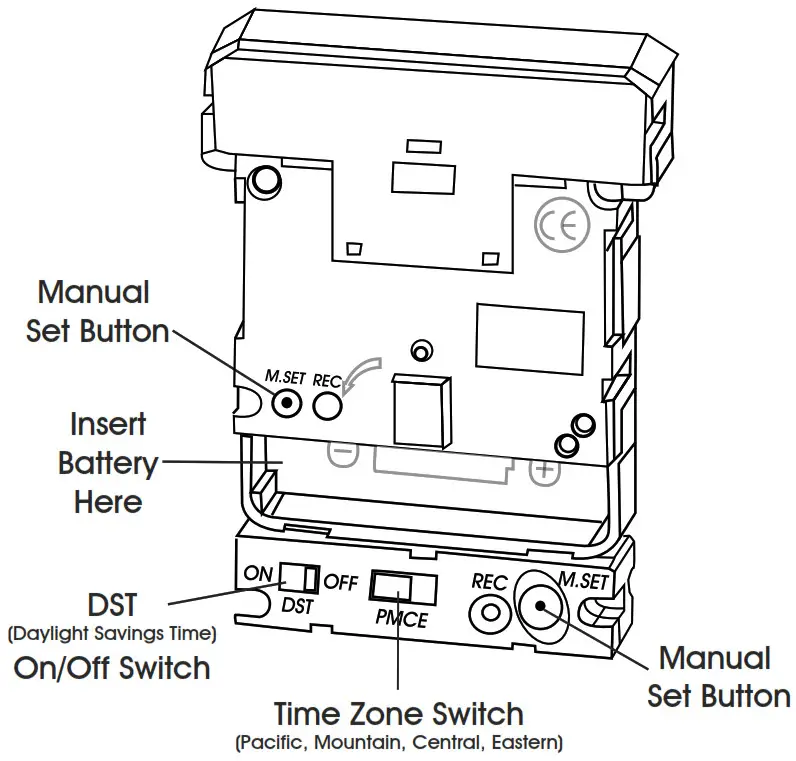 1-800-295-5510
1-800-295-5510
uline.ca
